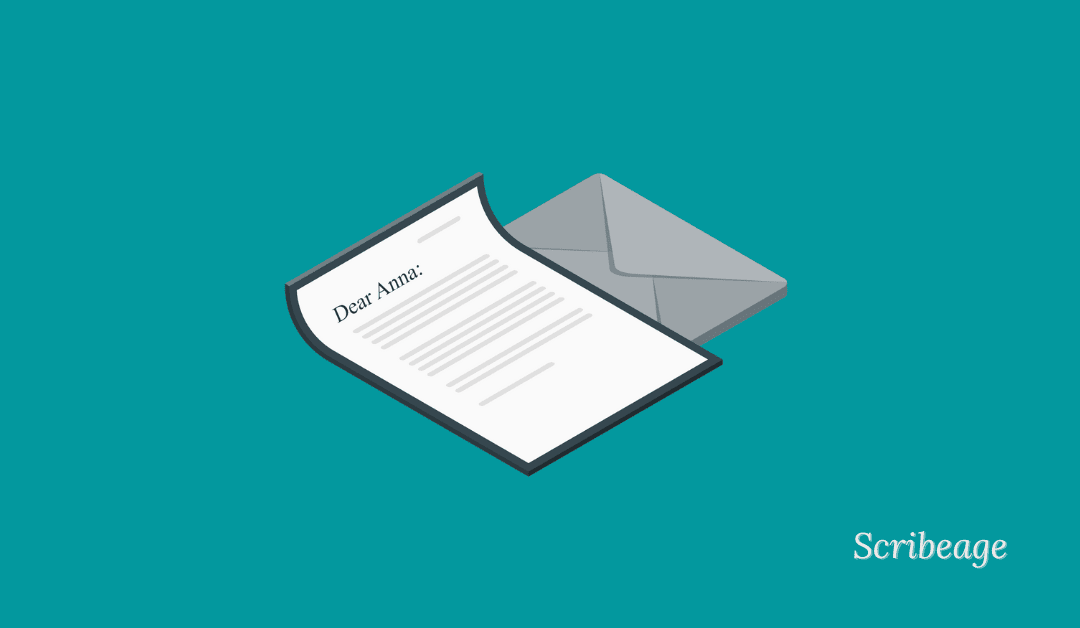In today’s highly competitive business landscape, generating leads is the lifeblood of any successful business. Whether you’re a seasoned marketer, a small business owner, or an ambitious startup, lead generation is important to your business growth and sustainability. Lead generation, in its essence, is the strategic process of identifying and nurturing potential customers or “leads” who have shown interest in your products, services, or business.
The way we generate leads has changed in recent years, thanks to the digital revolution and the introduction of advanced marketing and automation technologies. As a business owner, you can now access various tools and techniques to capture, nurture, and convert leads into paying customers. However, the key challenge lies in understanding the ever-changing customer behaviour and effectively targeting the right audience at the right time.
In this article, we will look into lead generation and the fundamental principles, strategies, and tactics underpinning this critical aspect of modern marketing. Whether you’re looking to expand your customer base, increase sales, or simply boost brand awareness, mastering the art of lead generation is an indispensable skill that can drive your business towards sustainable success. We must understand what lead generation is before we uncover the strategies and best practices that can help you harness the power of lead generation and take your business to new heights.
Table of Contents
What is Lead Generation
Lead generation refers to a marketing strategy focused on attracting and piquing the curiosity of individuals towards a particular product or service. This is done with the ultimate goal of establishing a potential customer base for future sales opportunities. This strategy encompasses various marketing techniques that kickstart consumer interest in a specific company’s offerings. In lead generation, marketers strive to encourage potential customers and guide them towards making a purchase. This process also entails connecting with individuals and converting them into individuals who possess a genuine interest in the offerings of a specific brand. Leads are sourced through diverse methods, such as personal recommendations, communications from vendors or the company via phone calls, events, advertising, and online platforms.
Creating potential customer opportunities stands as a primary goal for marketers. To optimise the effectiveness of the lead generation process and thereby boost revenue, it’s crucial to possess a deep understanding of how contact initiation mechanisms operate. Subsequently, the application of a set of strategies that enhance its effectiveness becomes essential for elevating accomplishments in this aspect.
Related: How to Generate More Leads and Build Brand Recognition
Concept of Lead Generation
Lead generation is a crucial marketing and sales process to identify and nurture potential customers who have expressed interest in a company’s products or services. Lead generation helps you initiate and nurture relationships with individuals or businesses that are more likely to become your paying customers. It’s an important step in the sales funnel, as leads are the foundation for your future sales and revenue generation. Here’s a breakdown of the concept of lead generation:

- Identification of Target Audience
The first step in lead generation is defining and identifying the ideal customer or target audience. This involves creating buyer personas and understanding their demographics, interests, needs, and pain points.
- Attracting Attention
Once the target audience is identified, you must create content and marketing strategies that attract their attention. This could involve content marketing, social media campaigns, advertising, search engine optimisation (SEO), and other techniques to increase your business visibility.
- Offering Value:
To capture leads, you must offer something valuable in exchange for their contact information. This can include eBooks, webinars, whitepapers, free trials, newsletters, or other content or resources that address your lead’s needs or interests.
- Landing Pages and Forms:
A crucial aspect of lead generation is the use of landing pages and forms on your website. These pages are designed specifically to capture lead information. Visitors are directed to these pages from various sources and are encouraged to fill out forms with their details (such as name, email, and phone number) in exchange for your valuable content or offer.
- Lead Magnets
The incentive offered to potential leads is often called a “lead magnet.” It’s what entices individuals to provide their contact information. Lead magnets should be attractive enough to make people take action. Lead magnets are the bribe you pay your website visitors to collect their personal data.
- Lead Nurturing
Not all leads are ready to make an immediate purchase. Lead nurturing involves ongoing communication and engagement with leads to build trust and guide them through the sales funnel. Email marketing, targeted content, and personalised communication are common lead nurturing tactics.
- Qualifying Leads
Not all leads are equally valuable. It’s important to qualify leads to prioritise efforts on those most likely to convert into customers. Lead scoring and segmentation can help in this process.
- Handing Off to Sales
Once a lead has been sufficiently nurtured and is deemed ready, they are handed off to the sales team for further engagement and conversion into a paying customer.
- Analytics and Optimisation
Continuous monitoring of lead generation efforts is crucial. Analysing metrics and performance data helps refine strategies, improve conversion rates, and ensure a steady flow of qualified leads.
Effective lead generation is essential for the growth and success of businesses, as it provides a consistent stream of potential customers and allows for a more efficient allocation of resources to convert those leads into loyal clients or customers.
The Significance of Lead Generation
Explaining the importance of lead generation is quite straightforward: Without leads, there are no prospects for the sales team to engage with; without prospects, there are no sales; without sales, the company lacks the revenue to meet its financial obligations. However, it’s crucial to clarify that a lead represents an individual in the early stages of the purchasing journey, essentially a potential customer. The ultimate goal is to convert these leads into actual clients. This underscores the necessity for every business to have a marketing team dedicated to lead generation and a sales team responsible for converting these leads into customers. This collaborative effort sustains the entire business operation.
Developing a robust strategy for generating high-quality leads is essential. Employing diverse techniques and tactics is imperative for nurturing these leads through their buying process, ultimately turning them into loyal customers.
Ways to Generate Leads
Generating potential leads requires employing strategies to engage suitable users and transform them into prospects. In digital marketing, these strategies are often referred to as digital channels. Below, we’ll delve into a few of these methods:
- Email Marketing
Within email marketing, tactics can be deployed to encourage interaction between your brand and a database of potential leads. This interaction not only enhances brand engagement but also provides valuable data that can be used to tailor strategies to convert these prospects into your company’s customers.
- Paid Search Engine Advertising (SEM)
Paid search engine advertisements offer another highly effective avenue for lead generation. By aligning actions with user search intent, these ads can be strategically positioned using pay-per-click (PPC) techniques. This ensures that your promotion appears precisely when individuals seek information about your products or services.
- Social Network Advertising
Harnessing the power of advertising on social networks is pivotal for attracting new leads. Given the widespread presence of individuals on platforms such as Facebook, Instagram, Twitter, and Snapchat, investing in these spaces can yield substantial returns. Some Facebook ad formats even enable lead capture directly within the social network, streamlining the process of disseminating information and creating impactful content.
- Tailored Social Network Strategies
Concentrate your efforts on the social networks that align with the preferences of your target audience. Effective lead generation relies on reaching an audience that holds genuine interest. It’s important to recognize that not all users inhabit the same social networks. For instance, LinkedIn is a prudent choice for B2B enterprises, while Facebook boasts a broad and diverse user base. Instagram caters well to brands in visually-driven sectors like makeup, fashion, and travel. X (formerly known as Twitter) carries more weight in current events discussions, and Snapchat and TikTok are optimal social media platforms for capturing a younger demographic.
- Paid Display Advertisements
Paid display ads encompass banner-style advertisements on popular websites relevant to your target audience. While lead conversion rates might be comparatively lower in this avenue, it remains a valuable channel for campaigns focusing on branding initiatives.
The spectrum of channels available for lead generation is diverse, spanning online strategies like search engine ads and offline methods like television, radio, public events, and direct mail. As your communication efforts expand, so do the possibilities for generating more leads.
How to Enhance the Rate of Lead Generation
To convert your prospective customers into leads, the following tactics can be employed

- Identify your target audience
Knowing your target audience is crucial for effective lead generation. You must understand their needs, interests, and pain points to create content that resonates with them.
- Offer value to users
Providing valuable content to your target audience can help you attract more leads. This can be in the form of blog posts, e-books, webinars, or other types of content that provide useful information.
- Simplify your lead generation form
Keep the sign-up form short and collect only the crucial information. This can improve the conversion rate.
- Use Newsletters for Relationship Development
Newsletters are a great way to keep your leads engaged and interested in your business. You can use them to provide updates, share new content, and offer promotions.
- Use Automation Tools
Marketing Automation tools like Mautic and Mailchimp can help you automate your lead generation process and save time. With a marketing automation tool, you can find prospects in your target accounts, personalise your outreach, and more.
- Test against best practices
Testing your lead generation campaigns against best practices can help you identify areas for improvement and increase your conversion rate.
Related: How to Increase Lead Generation with Mautic’s Advanced Features
How to Generate Leads: A Step-by-Step Approach
Lead generation is essential to growing any business, regardless of size. There are several ways to generate leads effectively. Here’s a step-by-step guide to help you generate more leads:
- Craft High-Quality Content
The content that your potential leads encounter must be compelling enough to persuade them that your product or service aligns with their requirements. This content should not only captivate and impress but also possess an irresistible appeal that compels them to engage further.
Vary your content offerings according to different stages of the purchasing journey. Eschew overly formal language and provide valuable content that enriches the user’s experience. You must develop informative, engaging, and relevant content for your target audience. This can include blog posts, videos, webinars, and whitepapers.
- Utilize CTAs on Your Website
A Call to Action (CTA) is a textual prompt, image, or button that links users to landing pages housing information about your offerings. Here, your leads can access content and insights, nurturing their interest. This process begets a demand for more content, achievable through additional CTAs.
- Fine-Tune Your Forms
Forms serve as the channel through which individual users transform into leads. These initial touchpoints must be adaptable, functioning seamlessly across diverse devices. Essential data-gathering fields should be present to aid in classification. Simplify your lead-capturing forms, asking for only essential information. A/B test different form designs and lengths to find the best-performing ones.
- Use Lead Magnets
Offer something of value to your target audience in exchange for their contact information. This can include free trials, whitepapers, ebooks, or exclusive content. Promote these lead magnets across your website and social media platforms.
- Use Landing Pages
Landing pages are dedicated web interfaces that convert unfamiliar visitors into potential clientele. These pages facilitate the transition from visitors to satisfied customers. By crafting alluring designs that resonate with customers, they’ll be more inclined to share their information through forms, unlocking access to further captivating content.
- Accelerate Conversions via Paid Advertising
Investing in a paid advertising strategy, leveraging the robust targeting tools on platforms like Facebook, Google, and LinkedIn, enables identifying individuals closely aligned with your brand. This precision targeting results in the generation of pertinent leads tailored to your marketing objectives.
Generating leads is only the first step. You need to follow up with them and nurture them so they become customers. Proper lead management is the key to turning those leads into paying customers.
Frequently Asked Questions
Before we round it up, here are answers to the most frequently asked questions about lead generation.
What is lead generation?
Lead generation is attracting and capturing potential customers (leads) for your products or services. It involves identifying individuals or businesses who have shown interest in what you offer and nurturing them until they are ready to purchase.
Why is lead generation important?
Lead generation is crucial for businesses as it helps expand their customer base, increase revenue, and foster growth. It enables companies to connect with potential customers who are genuinely interested in their offerings, making sales and marketing efforts more efficient.
What are some effective lead-generation strategies?
Effective lead-generation strategies include creating compelling content, optimizing your website for search engines (SEO), using social media marketing, running paid advertising campaigns, hosting webinars, and leveraging email marketing. The choice of strategy depends on your target audience and industry.
What is a lead magnet, and how does it generate leads?
A lead magnet is a valuable offer or incentive to potential leads in exchange for their contact information, typically their email addresses. Common lead magnets include eBooks, whitepapers, webinars, and free trials. Lead magnets work by enticing prospects to provide details, allowing you to initiate contact and nurture the relationship.
What is the difference between a marketing-qualified lead (MQL) and a sales-qualified lead (SQL)?
An MQL is an individual who has shown interest in your product or service but may not be ready to buy yet. They are typically nurtured through marketing efforts. An SQL, on the other hand, is a lead that has been vetted and is deemed ready for direct sales engagement. SQLs are often passed on to the sales team for conversion.
How can I measure the success of my lead-generation efforts?
Key performance indicators (KPIs) for lead generation success include conversion rates, cost per lead (CPL), return on investment (ROI), and the number of qualified leads generated. Tracking these metrics helps you assess the effectiveness of your strategies and make necessary adjustments.
What are some common lead generation mistakes to avoid?
Common lead generation mistakes include not clearly defining your target audience, neglecting to nurture leads over time, using irrelevant or outdated contact information, and failing to align your marketing and sales teams. It’s important to continuously analyse and optimise your lead generation efforts to avoid these pitfalls.
Final Thoughts
Lead generation is a crucial component of every business, as it helps to attract potential customers and increase sales opportunities. A company may have difficulty growing and attracting new customers without lead generation. Lead Generation creates consumer interest in a company’s products or services and nurtures them through the buying process. It involves attracting prospects to a business and increasing their interest through nurturing to convert them into customers.
Lead generation can be time-consuming and difficult, but there are many ways to generate leads, and plenty of tools can be used to speed up the process. Finding out which channels work best for a business when pursuing lead generation is important. Lead generation doesn’t have to mean selling immediately; many elements make up the lead generation process, including lead nurturing and lead qualification. When done well, lead generation can nurture qualified prospects into paying customers and loyal brand ambassadors.





0 Comments